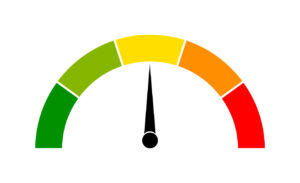Curating the week in wellness, January 26th-29th: How Biden’s administration will affect the workplace, DE&I predictions, and more
The week’s essential content and fresh industry pickings for those dedicated to employee well-being.

Good afternoon, wellness pros!
We trust you’re doing well, feeling healthy and staying upbeat—despite the madness continuously swirling all around us. As you strive to improve your colleagues’ health and well-being, don’t forget about caring for yourself, too. If you haven’t in a while, why not treat yourself to something nice?
In the meantime, enjoy this week’s links, and stay strong. As always, please get in touch with any ideas, suggestions or feedback on how we can serve you better.
1. Biden’s early impact on the workplace.
President Biden is just a week into his duties, but he’s already signed a flurry of orders that could affect your workplace. As SHRM explains, the directives pertain to racial equity, discrimination and a new path to citizenship.
Though early measures are “light on specifics,” Biden has revoked Trump’s order that limited diversity training, and he’s proceeding with pushing a $1.9 trillion stimulus package for pandemic relief.
2. CDC releases vaccine comms toolkit.
The CDC has published a handy compendium of vaccination messaging resources. It’s geared toward companies communicating with essential workers, but the principles remain the same regardless of your workforce. You’ll find fact sheets, posters, FAQs, slide decks and sample newsletter content that can help shape unique, persuasive messaging about your own vaccination efforts.
(It’s worth examining the EEOC’s proposed new regulations regarding “de minimis incentives” for participation in wellness programs, and worth noting that President Biden has named Charlotte Burrows as EEOC chair.)
3. 13 wellness program features to consider.
A Forbes piece lists a baker’s dozen of employee well-being initiatives to pursue in 2021, including enhanced mental health support, access to online fitness programs, easy-to-access counseling sessions, and resources for parents and caregivers.
4. Looking around for wellness vendors?
We’ve got you covered. SHRM has an extensive vendor library that’s helpfully segmented by niche. Core Health lists a slew of questions to consider before deciding on a provider, and G2 now posts candid reviews of top wellness software products.
5. How to improve remote worker relations—and evaluations.
HR Dive says it’s wise to check in more often, be compassionate but firm, and to rethink your rating system to set employees up for success.
The idea, as HBR writes, is to shift from managing “employee experience” to managing the “life experience” of employees. HBR also predicts that new regulations will limit remote employee monitoring in 2021 and that flexibility will shift from “location” to “time” of when work gets done.
Offering performance raises and bonuses are never a bad idea, either.
6. DE&I predictions for 2021.
After all the promises and pledges of last year, what now?
We can hope to see more women elevated into leadership roles, an increased demand for DE&I consultants, a greater effort to bolster diverse recruiting, and benefits catering to more diverse needs, according to SHRM.
7. Adapting wellness programs to a virtual setting.
Learn how Presbyterian Health Care and other New Mexico employers are shifting offerings and well-being priorities amid the ongoing pandemic. Here are 10 more ideas to consider as the pandemic drags on.
8. A health and wellness scorecard.
Have your employees completed the Hero Health and Well-being Best Practices Scorecard? It’s a great way to gather “an instant assessment of how your program stacks up to others in the national scorecard database.”
The scorecard’s 2020 report derived a list of “best practices that drive wellness” from its research. The guidance includes:
Organizational and leadership support
• Demonstrate organizational commitment to health and well-being.
• Engage employees at all levels of the organization.
• Develop a strategic plan and reporting for multiple stakeholders.
• Target communications to diverse groups.
Comprehensive programs
• Offer individualized, population-based programs in multiple channels.
• Offer lifestyle and disease management programs.
• Ensure programs include robust features (e.g., social connection).
• Provide tools to track health.
Program integration
• Integrate programs, communications, data, and strategy.
• Integrate well-being programs with other employee benefits.
9. Teleworking parents are suffering.
Pew research confirms that working parents are struggling mightily to balance work, life and child care responsibilities. An outsize burden is weighing on moms, in particular, though 28% of dads say the pandemic has severely hampered their productivity as well.
Here’s guidance from Fast Company, UNICEF and LinkedIn on how to support parents who are coping with an impossible situation.
10. Prioritizing employee growth.
Professional development plays a key role in employee engagement and retention. Feeling like you’re learning and being challenged factors into wellness, too, so companies would be wise to facilitate more opportunities for growth in 2021.
If you’re keen to do so, Gallup says to pursue performance development rather than management, tie training to unique employee strengths, and to prioritize internal recruitment to find hidden heroes in your midst.







